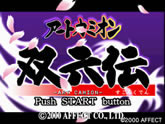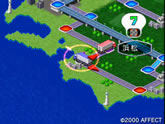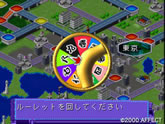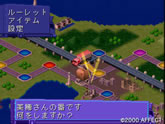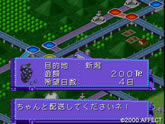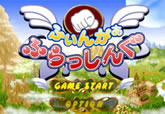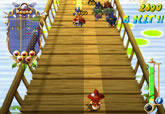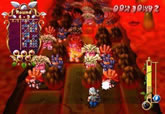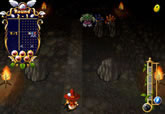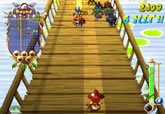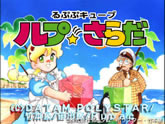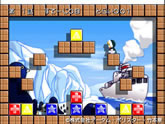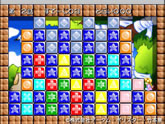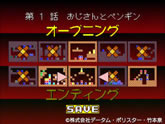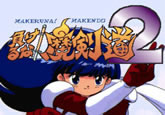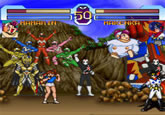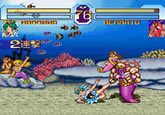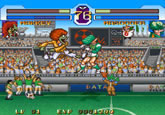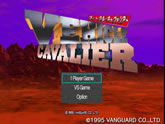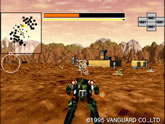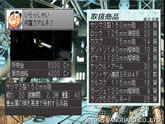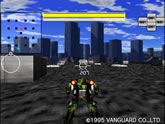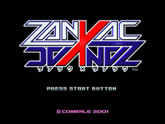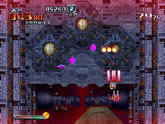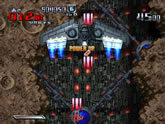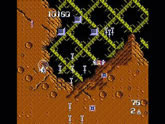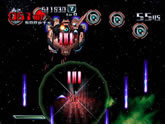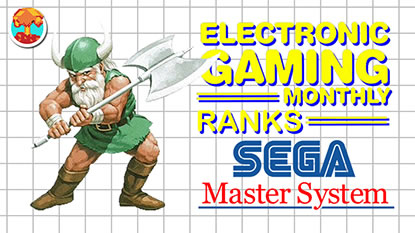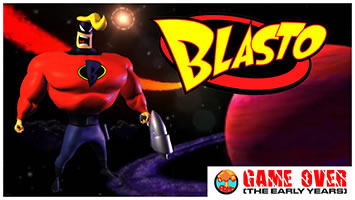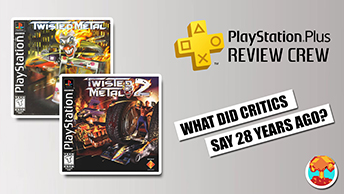- CLASSIC MAGAZINES
- REVIEW CREW
A show recapping what critics thought back
when classic games first came out! - NEXT GENERATION'S BEST & WORST
From the worst 1-star reviews to the best
5-stars can offer, this is Next Generation! - NINTENDO POWER (ARCHIVE)
Experience a variety of shows looking at the
often baffling history of Nintendo Power! - MAGAZINE RETROSPECTIVE
We're looking at the absolutely true history of
some of the most iconic game magazines ever! - SUPER PLAY'S TOP 600
The longest and most ambitious Super NES
countdown on the internet! - THEY SAID WHAT?
Debunking predictions and gossip found
in classic video game magazines! - NEXT GENERATION UNCOVERED
Cyril is back in this spin-off series, featuring the
cover critic review the art of Next Generation! - HARDCORE GAMER MAGAZING (PDF ISSUES)
Download all 36 issues of Hardcore Gamer
Magazine and relive the fun in PDF form!
- REVIEW CREW
- ELECTRONIC GAMING MONTHLY
- ELECTRONIC GAMING MONTHLY RANKS
From Mario to Sonic to Street Fighter, EGM
ranks classic game franchises and consoles! - ELECTRONIC GAMING MONTHLY BEST & WORST
Counting down EGM’s best and worst reviews
going year by year, from 1989 – 2009! - ELECTRONIC GAMING BEST & WORST AWARDS
11-part video series chronicling the ups and
downs of EGM’s Best & Worst Awards!
- ELECTRONIC GAMING MONTHLY RANKS
- GAME HISTORY
- GAME OVER: STORY BREAKDOWNS
Long-running series breaking down game
stories and analyzing their endings! - A BRIEF HISTORY OF GAMING w/ [NAME HERE]
Real history presented in a fun and pithy
format from a variety of game historians! - THE BLACK SHEEP
A series looking back at the black sheep
entries in popular game franchises! - INSTANT EXPERT
Everything you could possibly want to know
about a wide variety of gaming topics! - FREEZE FRAME
When something familiar happens in the games
industry, we're there to take a picture! - I'VE GOT YOUR NUMBER
Learn real video game history through a series
of number-themed episodes, starting at zero! - GREAT MOMENTS IN BAD ACTING
A joyous celebration of some of gaming's
absolute worst voice acting!
- GAME OVER: STORY BREAKDOWNS
- POPULAR SHOWS
- DG NEWS w/ LORNE RISELEY
Newsman Lorne Riseley hosts a regular
series looking at the hottest gaming news! - REVIEW REWIND
Cyril replays a game he reviewed 10+ years
ago to see if he got it right or wrong! - ON-RUNNING FEUDS
Defunct Games' longest-running show, with
editorials, observations and other fun oddities! - DEFUNCT GAMES QUIZ (ARCHIVE)
From online quizzes to game shows, we're
putting your video game knowledge to the test!- QUIZ: ONLINE PASS
Take a weekly quiz to see how well you know
the news and current gaming events! - QUIZ: KNOW THE GAME
One-on-one quiz show where contestants
find out if they actually know classic games! - QUIZ: THE LEADERBOARD
Can you guess the game based on the classic
review? Find out with The Leaderboard!
- QUIZ: ONLINE PASS
- DEFUNCT GAMES VS.
Cyril and the Defunct Games staff isn't afraid
to choose their favorite games and more! - CYRIL READS WORLDS OF POWER
Defunct Games recreates classic game
novelizations through the audio book format!
- DG NEWS w/ LORNE RISELEY
- COMEDY
- GAME EXPECTANCY
How long will your favorite hero live? We crunch
the numbers in this series about dying! - VIDEO GAME ADVICE
Famous game characters answer real personal
advice questions with a humorous slant! - FAKE GAMES: GUERILLA SCRAPBOOK
A long-running series about fake games and
the people who love them (covers included)! - WORST GAME EVER
A contest that attempts to create the worst
video game ever made, complete with covers! - LEVEL 1 STORIES
Literature based on the first stages of some
of your favorite classic video games! - THE COVER CRITIC
One of Defunct Games' earliest shows, Cover
Critic digs up some of the worst box art ever! - COMMERCIAL BREAK
Take a trip through some of the best and
worst video game advertisements of all time! - COMIC BOOK MODS
You've never seen comics like this before.
A curious mix of rewritten video game comics!
- GAME EXPECTANCY
- SERIES ARCHIVE
- NINTENDO SWITCH ONLINE ARCHIVE
A regularly-updated list of every Nintendo
Switch Online release, plus links to review! - PLAYSTATION PLUS CLASSIC ARCHIVE
A comprehensive list of every PlayStation
Plus classic release, including links! - RETRO-BIT PUBLISHING ARCHIVE
A regularly-updated list of every Retro-Bit
game released! - REVIEW MARATHONS w/ ADAM WALLACE
Join critic Adam Wallace as he takes us on a
classic review marathon with different themes!- DEFUNCT GAMES GOLF CLUB
Adam Wallace takes to the links to slice his way
through 72 classic golf game reviews! - 007 IN PIXELS
Adam Wallace takes on the world's greatest spy
as he reviews 15 weeks of James Bond games! - A SALUTE TO VAMPIRES
Adam Wallace is sinking his teeth into a series
covering Castlevania, BloodRayne and more! - CAPCOM'S CURSE
Adam Wallace is celebrating 13 days of Halloween
with a line-up of Capcom's scariest games! - THE FALL OF SUPERMAN
Adam Wallace is a man of steel for playing
some of the absolute worst Superman games! - THE 31 GAMES OF HALLOWEEN
Adam Wallace spends every day of October afraid
as he reviews some of the scariest games ever! - 12 WEEKS OF STAR TREK
Adam Wallace boldly goes where no critic has
gone before in this Star Trek marathon!
- DEFUNCT GAMES GOLF CLUB
- DAYS OF CHRISTMAS (ARCHIVE)
Annual holiday series with themed-episodes
that date all the way back to 2001!- 2015: 30 Ridiculous Retro Rumors
- 2014: 29 Magazines of Christmas
- 2013: 29 Questionable Power-Ups of Christmas
- 2012: 34 Theme Songs of Christmas
- 2011: 32 Game Endings of Christmas
- 2010: 31 Bonus Levels of Christmas
- 2009: 30 Genres of Christmas
- 2008: 29 Controls of Christmas
- 2007: 34 Cliches of Christmas
- 2006: 33 Consoles of Christmas
- 2005: 32 Articles of Christmas
- 2004: 31 Websites of Christmas
- 2003: 29 Issues of Christmas
- 2002: 28 Years of Christmas
- 2001: 33 Days of Christmas
- NINTENDO SWITCH ONLINE ARCHIVE
- REVIEW ARCHIVE
- FULL ARCHIVE
This Week in Defunct Games - GungHo Round-Up
It's time for another exciting episode of This Week in Defunct Games ... wait ... no it's not! Today is Monday and everybody knows that This Week in Defunct Games happens every Friday. No, this is not schedule change. This is a very special bonus episode looking at six recent PS1 imports from GungHo. Don't worry Nintendo nuts; we'll be back on Friday with reviews of this week's Virtual Console releases. Until then, let's check out last week's PSone Classics ...
 Fans of obscure Japanese games have something to get excited about, because last week GungHo became the third publisher to embrace PSN's import store. Without any warning, GungHo dropped six (that's right, SIX!) PlayStation 1 games on the PSN, finally giving Americans a taste of what they have been missing. The six games included puzzles (Finger Flashing, Lup Salad), fighting (Makeruna! Makendo 2), board games (Art Camion Sugorokuden), mechs (Vehicle Cavalier) and space shooting (Zanac x Zanac). All six games are $5.99 and work with the PlayStation 3, PS Vita and PSP. Please remember that none of these games have been localized, so expect to put up with menus, dialog and options in full Japanese.
Fans of obscure Japanese games have something to get excited about, because last week GungHo became the third publisher to embrace PSN's import store. Without any warning, GungHo dropped six (that's right, SIX!) PlayStation 1 games on the PSN, finally giving Americans a taste of what they have been missing. The six games included puzzles (Finger Flashing, Lup Salad), fighting (Makeruna! Makendo 2), board games (Art Camion Sugorokuden), mechs (Vehicle Cavalier) and space shooting (Zanac x Zanac). All six games are $5.99 and work with the PlayStation 3, PS Vita and PSP. Please remember that none of these games have been localized, so expect to put up with menus, dialog and options in full Japanese.
 What Is It?
Art Camion Sugorokuden may actually be the most exciting GungHo game released last week. With a dash of Mario Party and a whole lot of 18-wheeler truckin', this hard to pronounce board game looks like a lot of fun. So what's the problem? Every single inch of this game is covered in menus, options, names, places and story elements completely written in Japanese. The game is so text-heavy that even getting into a single-player match can take a lot of work.
What Is It?
Art Camion Sugorokuden may actually be the most exciting GungHo game released last week. With a dash of Mario Party and a whole lot of 18-wheeler truckin', this hard to pronounce board game looks like a lot of fun. So what's the problem? Every single inch of this game is covered in menus, options, names, places and story elements completely written in Japanese. The game is so text-heavy that even getting into a single-player match can take a lot of work.
Players take turns spinning a number wheel (in Japanese) and moving around a large city connected by streets and highways. The game board they've constructed is truly impressive, taking players all over a realistic city. The idea is to race a prize box that is randomly placed at the beginning of each round. Your job is to figure out the best path to the prize before your friend (or up to three computer-controlled foes) gets there.
The problem is that I'm only about 50% sure I know the actual rules. I'm still thoroughly confused by the food, different colored spaces and why the computer is so much better than me. I'm sure these are all things addressed in text, but alas, it's all in a language I don't speak. This isn't a bad game, but this is only going to appeal to a very small audience.
Does It Still Hold Up? Assuming I have the rules straight, Art Camion Sugorokuden isn't as complicated as it seems. In fact, the game ends up playing out like Chutes & Ladders with big rigs. It seems like it all comes down to luck of the spin, not real strategy. Or perhaps I'm wrong and the hidden depth isn't apparent because I don't speak the language. The visuals are also unspectacular. The whole package is daring American gamers to give it a chance.
Is It Worth The Money? This is the most conflicted I've been all year. On one hand, this may actually be a truly original board game with a lot to offer those gamers who play alone and the people that hang out in groups. Then again, not enough of the game makes sense, and what does line-up isn't as interesting as it should be. Fans who know the ins and outs of Art Camion Sugorokuden will probably cringe at my score, but it is my opinion that most English speaking gamers should avoid this at all costs. It's a shame, because I really like the idea of an open world Mario Party starring a bunch of 18 wheelers. Somebody needs to get on that idea.
 What Is It?
Don't let the lost-in-translation title throw you, because Finger Flashing is an addictive little puzzle game that means business. Think of it as a wicked combination of Tempest and Rock, Paper, Scissors. You play a witch forced to defeat baddies based on different hand signals. It all boils down to paper covers rock, rock breaks scissors and scissors cut paper. The idea is to move between the six lanes and use one of three magic spells to defeat the three types of enemies. But beware, throwing the wrong spell results in a new monster showing up on the board.
What Is It?
Don't let the lost-in-translation title throw you, because Finger Flashing is an addictive little puzzle game that means business. Think of it as a wicked combination of Tempest and Rock, Paper, Scissors. You play a witch forced to defeat baddies based on different hand signals. It all boils down to paper covers rock, rock breaks scissors and scissors cut paper. The idea is to move between the six lanes and use one of three magic spells to defeat the three types of enemies. But beware, throwing the wrong spell results in a new monster showing up on the board.
Although it looks like a shooter, it didn't take long for my Rock Band chops to kick in. The spells are mapped to three different buttons, so after a while it turns into a simple game of hitting every note ... er, bad guy. Finger Flashing does throw in a few wrinkles along the way. The cave stage sees enemies hiding behind rocks and other obstacles. In another stage you'll put up with bad guys that jump around and morph. The volcano stage is especially nasty, obscuring your vision of the enemies.
Does It Still Hold Up? I was pleasantly surprised by Finger Flashing. Visually, the game looks incredibly sharp. Thanks to a stylish art design, you don't get the usual rough edges and outdated graphics. The various stages are also impressive, each with their own gimmick. The controls are simple enough, though it took me a few tries to fully grasp what was going on. If you can get past the initial learning curve, you'll discover that Finger Flashing still holds up remarkably well.
Is It Worth The Money? Silly name aside, Finger Flashing turns out to be a great game. It's easy to play and I like that you can jump to any level at any time. It also does a good job of adding new ideas to the theme, something that adds a lot of character to the various stages. Best of all, almost all of the game is in English. Oh sure, you'll miss out on a few names and places, but everything from the pause menu to the options are in English. If you're curious about these GungHo PlayStation imports but don't know where to start, Finger Flashing should be at the top of the list.
 What Is It?
For many Americans, Dokuro was their first taste of GungHo. Even with its weird name and skeletal hero, this puzzler won over fans and critics alike. While not as endearing, Lup Salad suggests that this is a company with a long history of solid puzzle games.
What Is It?
For many Americans, Dokuro was their first taste of GungHo. Even with its weird name and skeletal hero, this puzzler won over fans and critics alike. While not as endearing, Lup Salad suggests that this is a company with a long history of solid puzzle games.
At its core, Lup Salad is nothing more than a simple color-matching exercise. You do this by pushing boxes around the stage. Match three colors and they disappear; eliminate all of the blocks and move on to the next stage. It's a simple set-up that allows for an impressive number of puzzles to solve. You play Salad, a precocious young woman on an adventure in the Puzzle Kingdom. There are more than 300 stages and, best of all, quick save functionality.
Does It Still Hold Up? Of the six PlayStation games GungHo released last week, Lup Salad is among the most accessible. You don't need an instruction manual to know that pairing three colored blocks is the recipe for success. The visuals are sharp and I like how weird the story goes ... at least on a strictly visual level. My one complaint involves the control mechanics, which are a little too quick to act. I found myself accidentally getting stuck because my character was too willing to rush forward. And while not a deal breaker, I wish it was easier to quickly reset the stage or rewind time.
Is It Worth The Money? Lup Salad is exactly the type of game GungHo should be publishing in the United States. While not the most original idea, this 1996 puzzler offers a lot of content for a very small price. You'll be working on the three hundred puzzles for weeks to come; completely ignoring those hot new games you got for Christmas. Lup Salad definitively proves that Dokuro wasn't a fluke!
 What Is It?
Now here's a Street Fighter II clone you probably haven't played before. Originally released on the 16-bit Super Famicom, Makeruna! Makendo 2 (aka Don't Lose! Kendo Magic 2: Deciding Who Will Be President of the Monsters) is a cheeky one-on-one fighter with a heavy emphasis on adorable whimsy and high school cliches. The eight selectable characters include Madonna the ballerina, Mamarin the fat girl, Makenro the futuristic tennis star, Massoccer the jock and, of course, Makkey the stoner musician.
What Is It?
Now here's a Street Fighter II clone you probably haven't played before. Originally released on the 16-bit Super Famicom, Makeruna! Makendo 2 (aka Don't Lose! Kendo Magic 2: Deciding Who Will Be President of the Monsters) is a cheeky one-on-one fighter with a heavy emphasis on adorable whimsy and high school cliches. The eight selectable characters include Madonna the ballerina, Mamarin the fat girl, Makenro the futuristic tennis star, Massoccer the jock and, of course, Makkey the stoner musician.
The action feels a lot like Street Fighter, with fireballs, uppercuts and spinning kicks all pulled off with the all too familiar quarter-circle motion. The game does attempt to add a role-playing element, awarding experience points after each battle. Before long you'll have a long enough life bar to finally take on the giant robot menace. The game's crazy story is spelled out through a number of lengthy cinemas, all of which includes endless Japanese text. Thankfully you don't need to read the language in order to have a good time with Makeruna! Makendo 2.
Does It Still Hold Up? The good ideas found in Makeruna! Makendo 2 aren't enough to keep the game from feeling outdated. Despite being a PlayStation game, the visuals are decidedly 16-bit. The characters are small and the backgrounds are simple. It's also disappointing to see the paltry selection of characters. On the other hand, the gameplay is solid and some of the special moves are fun to pull off.
Is It Worth The Money? Even by 1995 standards, Makeruna! Makendo 2 is a middling release. It manages to successfully ape the Street Fighter formula, but doesn't do anything new or original with it. I do like the school theme and some of the backgrounds, and the gameplay is strong enough to make it worth a look. In a year full of must-own fighting games across all platforms, it's difficult to make a strong argument for Makeruna! Makendo 2.
 What Is It?
With its endless menus, robust in-game store and tons of custom options, Vehicle Cavalier is one of GungHo's most incomprehensible releases. In fact, the game is so impenetrable that it took me the better part of ten minutes to even discern the genre. And even when I figured out that this is an insanely outdated fight shooter, I still wasn't 100% sure what I did to make it go. As it turns out, Vehicle Cavalier isn't worth the hassle.
What Is It?
With its endless menus, robust in-game store and tons of custom options, Vehicle Cavalier is one of GungHo's most incomprehensible releases. In fact, the game is so impenetrable that it took me the better part of ten minutes to even discern the genre. And even when I figured out that this is an insanely outdated fight shooter, I still wasn't 100% sure what I did to make it go. As it turns out, Vehicle Cavalier isn't worth the hassle.
You play one of eight characters, each with their own story and weapons. You zip around the large open stages looking for tanks and other mechs. Between rounds, players will be able to select from over 300 attachments. All this sounds great on paper, but is an unmitigated disaster in execution. Even if you can get past the foreign language, you're left with an unintuitive action game that fights you every step of the way. Customizing your mech is harder than it should be and Vehicle Cavalier seems more interested in hard to navigate menus than good gameplay.
Does It Still Hold Up? Released in 1995, this game came out before the invent of the dual shock controller. Because of this, everything is mapped to the D-pad and face buttons, making it almost impossible to control. It never felt like I had full control over the aiming and moving around is a nightmare. It doesn't help that the levels are so bland, rarely giving players much to hide behind. The visuals are also disappointing, full of technical problems and ugly mech models. Even if you can get past the mountain of Japanese text, you're left with an out of date mech game that fails on even the basic levels.
Is It Worth The Money? Mech games are hard to pull off even in the best of circumstances, so it doesn't surprise me that Vehicle Cavalier is so difficult to play. What shocks me is how awful the whole experience is. It doesn't help that the game is Japanese text-heavy and stumbling into a match can occasionally feel like dumb luck. With no analog stick support and an emphasis on boring menus, Vehicle Cavalier is impossible to recommend.
 What Is It?
It shouldn't surprise anybody that GungHo's most accessible PlayStation import is a 2D shooter. No matter what language we speak or religion we believe, blowing the stuffing out of space aliens is the one thing that brings us all together. Shooting down UFOs is truly the universal language. I hope you brought the dictionary, because Zanac x Zanac delivers two game's worth of space alien punishment.
What Is It?
It shouldn't surprise anybody that GungHo's most accessible PlayStation import is a 2D shooter. No matter what language we speak or religion we believe, blowing the stuffing out of space aliens is the one thing that brings us all together. Shooting down UFOs is truly the universal language. I hope you brought the dictionary, because Zanac x Zanac delivers two game's worth of space alien punishment.
Of the six obscure Japanese games GungHo released this week, only Zanac saw a North American release. Originally found on the MSX and Famicom, Zanac snuck its way to these shores thanks to FCI. You play a spaceship fighting through twelve different planets, each with its own look and enemy clusters. Players have a couple weapons at the ready, including a machine gun and a secondary cannon you can aim. Both of these can be upgraded, ultimately turning the player into an unstoppable force. Throw in the shield and the enemy might as well not even show up.
As I mentioned above, Zanac x Zanac comes with two versions of the popular 8-bit shoot-em-up. The first is the original Famicom release, which in turn allows you to choose from two slight variations. The other mode is Zanac Neo, a remake from 2001. The newer version includes new modes to choose from, different spaceships to pilot and new power-ups to equip. Best of all, the new visuals make this one of the most exciting 2D shooters on the 32-bit PlayStation.
Does It Still Hold Up? Zanac x Zanac didn't just fall out of the sky from a no-name developer; it was created by one of the best teams in the business. This is developed by Compile, the company best known for Puyo Puyo, M.U.S.H.A., Robo Aleste and Devi's Crush. The remade visuals really stand out, especially on the PS Vita's screen. There are all kinds of visual flourishes covering screen, never allowing the player to blink or catch a breath. The music and sound effects also stand out, making this one of the best looking shooters on the PSN.
Is It Worth The Money? Zanac x Zanac isn't going to win over new fans to the 2D shoot-em-up genre. This is little more than a remake of a 26 year old action game. On the other hand, it's a damn good remake. While still challenging, I never felt like either Zanac titles were too punishing. The weapons may not look like much at first, but power them up and you'll feel like a real badass. It doesn't matter if you're math challenged, because all you need to know is that Zanac x Zanac equals instant fun.

Art Camion Sugorokuden (Affect)
[ Release: December 4 | Price: $5.99 | Console: PlayStation | Year: 2000 ]
[ Release: December 4 | Price: $5.99 | Console: PlayStation | Year: 2000 ]

Players take turns spinning a number wheel (in Japanese) and moving around a large city connected by streets and highways. The game board they've constructed is truly impressive, taking players all over a realistic city. The idea is to race a prize box that is randomly placed at the beginning of each round. Your job is to figure out the best path to the prize before your friend (or up to three computer-controlled foes) gets there.
The problem is that I'm only about 50% sure I know the actual rules. I'm still thoroughly confused by the food, different colored spaces and why the computer is so much better than me. I'm sure these are all things addressed in text, but alas, it's all in a language I don't speak. This isn't a bad game, but this is only going to appeal to a very small audience.
Does It Still Hold Up? Assuming I have the rules straight, Art Camion Sugorokuden isn't as complicated as it seems. In fact, the game ends up playing out like Chutes & Ladders with big rigs. It seems like it all comes down to luck of the spin, not real strategy. Or perhaps I'm wrong and the hidden depth isn't apparent because I don't speak the language. The visuals are also unspectacular. The whole package is daring American gamers to give it a chance.
Is It Worth The Money? This is the most conflicted I've been all year. On one hand, this may actually be a truly original board game with a lot to offer those gamers who play alone and the people that hang out in groups. Then again, not enough of the game makes sense, and what does line-up isn't as interesting as it should be. Fans who know the ins and outs of Art Camion Sugorokuden will probably cringe at my score, but it is my opinion that most English speaking gamers should avoid this at all costs. It's a shame, because I really like the idea of an open world Mario Party starring a bunch of 18 wheelers. Somebody needs to get on that idea.
Finger Flashing (Funpac)
[ Release: December 4 | Price: $5.99 | Console: PlayStation | Year: 1999 ]
[ Release: December 4 | Price: $5.99 | Console: PlayStation | Year: 1999 ]

Although it looks like a shooter, it didn't take long for my Rock Band chops to kick in. The spells are mapped to three different buttons, so after a while it turns into a simple game of hitting every note ... er, bad guy. Finger Flashing does throw in a few wrinkles along the way. The cave stage sees enemies hiding behind rocks and other obstacles. In another stage you'll put up with bad guys that jump around and morph. The volcano stage is especially nasty, obscuring your vision of the enemies.
Does It Still Hold Up? I was pleasantly surprised by Finger Flashing. Visually, the game looks incredibly sharp. Thanks to a stylish art design, you don't get the usual rough edges and outdated graphics. The various stages are also impressive, each with their own gimmick. The controls are simple enough, though it took me a few tries to fully grasp what was going on. If you can get past the initial learning curve, you'll discover that Finger Flashing still holds up remarkably well.
Is It Worth The Money? Silly name aside, Finger Flashing turns out to be a great game. It's easy to play and I like that you can jump to any level at any time. It also does a good job of adding new ideas to the theme, something that adds a lot of character to the various stages. Best of all, almost all of the game is in English. Oh sure, you'll miss out on a few names and places, but everything from the pause menu to the options are in English. If you're curious about these GungHo PlayStation imports but don't know where to start, Finger Flashing should be at the top of the list.
Lup Salad (Funpac)
[ Release: December 4 | Price: $5.99 | Console: PlayStation | Year: 1996 ]
[ Release: December 4 | Price: $5.99 | Console: PlayStation | Year: 1996 ]

At its core, Lup Salad is nothing more than a simple color-matching exercise. You do this by pushing boxes around the stage. Match three colors and they disappear; eliminate all of the blocks and move on to the next stage. It's a simple set-up that allows for an impressive number of puzzles to solve. You play Salad, a precocious young woman on an adventure in the Puzzle Kingdom. There are more than 300 stages and, best of all, quick save functionality.
Does It Still Hold Up? Of the six PlayStation games GungHo released last week, Lup Salad is among the most accessible. You don't need an instruction manual to know that pairing three colored blocks is the recipe for success. The visuals are sharp and I like how weird the story goes ... at least on a strictly visual level. My one complaint involves the control mechanics, which are a little too quick to act. I found myself accidentally getting stuck because my character was too willing to rush forward. And while not a deal breaker, I wish it was easier to quickly reset the stage or rewind time.
Is It Worth The Money? Lup Salad is exactly the type of game GungHo should be publishing in the United States. While not the most original idea, this 1996 puzzler offers a lot of content for a very small price. You'll be working on the three hundred puzzles for weeks to come; completely ignoring those hot new games you got for Christmas. Lup Salad definitively proves that Dokuro wasn't a fluke!
Makeruna! Makendo 2 (Datam Polystar)
[ Release: December 4 | Price: $5.99 | Console: PlayStation | Year: 1995 ]
[ Release: December 4 | Price: $5.99 | Console: PlayStation | Year: 1995 ]

The action feels a lot like Street Fighter, with fireballs, uppercuts and spinning kicks all pulled off with the all too familiar quarter-circle motion. The game does attempt to add a role-playing element, awarding experience points after each battle. Before long you'll have a long enough life bar to finally take on the giant robot menace. The game's crazy story is spelled out through a number of lengthy cinemas, all of which includes endless Japanese text. Thankfully you don't need to read the language in order to have a good time with Makeruna! Makendo 2.
Does It Still Hold Up? The good ideas found in Makeruna! Makendo 2 aren't enough to keep the game from feeling outdated. Despite being a PlayStation game, the visuals are decidedly 16-bit. The characters are small and the backgrounds are simple. It's also disappointing to see the paltry selection of characters. On the other hand, the gameplay is solid and some of the special moves are fun to pull off.
Is It Worth The Money? Even by 1995 standards, Makeruna! Makendo 2 is a middling release. It manages to successfully ape the Street Fighter formula, but doesn't do anything new or original with it. I do like the school theme and some of the backgrounds, and the gameplay is strong enough to make it worth a look. In a year full of must-own fighting games across all platforms, it's difficult to make a strong argument for Makeruna! Makendo 2.
Vehicle Cavalier (Vanguard)
[ Release: December 4 | Price: $5.99 | Console: PlayStation | Year: 1996 ]
[ Release: December 4 | Price: $5.99 | Console: PlayStation | Year: 1996 ]

You play one of eight characters, each with their own story and weapons. You zip around the large open stages looking for tanks and other mechs. Between rounds, players will be able to select from over 300 attachments. All this sounds great on paper, but is an unmitigated disaster in execution. Even if you can get past the foreign language, you're left with an unintuitive action game that fights you every step of the way. Customizing your mech is harder than it should be and Vehicle Cavalier seems more interested in hard to navigate menus than good gameplay.
Does It Still Hold Up? Released in 1995, this game came out before the invent of the dual shock controller. Because of this, everything is mapped to the D-pad and face buttons, making it almost impossible to control. It never felt like I had full control over the aiming and moving around is a nightmare. It doesn't help that the levels are so bland, rarely giving players much to hide behind. The visuals are also disappointing, full of technical problems and ugly mech models. Even if you can get past the mountain of Japanese text, you're left with an out of date mech game that fails on even the basic levels.
Is It Worth The Money? Mech games are hard to pull off even in the best of circumstances, so it doesn't surprise me that Vehicle Cavalier is so difficult to play. What shocks me is how awful the whole experience is. It doesn't help that the game is Japanese text-heavy and stumbling into a match can occasionally feel like dumb luck. With no analog stick support and an emphasis on boring menus, Vehicle Cavalier is impossible to recommend.
Zanac x Zanac (Compile)
[ Release: December 4 | Price: $5.99 | Console: PlayStation | Year: 2001 ]
[ Release: December 4 | Price: $5.99 | Console: PlayStation | Year: 2001 ]

Of the six obscure Japanese games GungHo released this week, only Zanac saw a North American release. Originally found on the MSX and Famicom, Zanac snuck its way to these shores thanks to FCI. You play a spaceship fighting through twelve different planets, each with its own look and enemy clusters. Players have a couple weapons at the ready, including a machine gun and a secondary cannon you can aim. Both of these can be upgraded, ultimately turning the player into an unstoppable force. Throw in the shield and the enemy might as well not even show up.
As I mentioned above, Zanac x Zanac comes with two versions of the popular 8-bit shoot-em-up. The first is the original Famicom release, which in turn allows you to choose from two slight variations. The other mode is Zanac Neo, a remake from 2001. The newer version includes new modes to choose from, different spaceships to pilot and new power-ups to equip. Best of all, the new visuals make this one of the most exciting 2D shooters on the 32-bit PlayStation.
Does It Still Hold Up? Zanac x Zanac didn't just fall out of the sky from a no-name developer; it was created by one of the best teams in the business. This is developed by Compile, the company best known for Puyo Puyo, M.U.S.H.A., Robo Aleste and Devi's Crush. The remade visuals really stand out, especially on the PS Vita's screen. There are all kinds of visual flourishes covering screen, never allowing the player to blink or catch a breath. The music and sound effects also stand out, making this one of the best looking shooters on the PSN.
Is It Worth The Money? Zanac x Zanac isn't going to win over new fans to the 2D shoot-em-up genre. This is little more than a remake of a 26 year old action game. On the other hand, it's a damn good remake. While still challenging, I never felt like either Zanac titles were too punishing. The weapons may not look like much at first, but power them up and you'll feel like a real badass. It doesn't matter if you're math challenged, because all you need to know is that Zanac x Zanac equals instant fun.
HOME |
CONTACT |
NOW HIRING |
WHAT IS DEFUNCT GAMES? |
NINTENDO SWITCH ONLINE |
RETRO-BIT PUBLISHING
Retro-Bit |
Switch Planet |
The Halcyon Show |
Same Name, Different Game |
Dragnix |
Press the Buttons
Game Zone Online | Hardcore Gamer | The Dreamcast Junkyard | Video Game Blogger
Dr Strife | Games For Lunch | Mondo Cool Cast | Boxed Pixels | Sega CD Universe | Gaming Trend
Game Zone Online | Hardcore Gamer | The Dreamcast Junkyard | Video Game Blogger
Dr Strife | Games For Lunch | Mondo Cool Cast | Boxed Pixels | Sega CD Universe | Gaming Trend
Copyright © 2001-2025 Defunct Games
All rights reserved. All trademarks are properties of their respective owners.
All rights reserved. All trademarks are properties of their respective owners.








